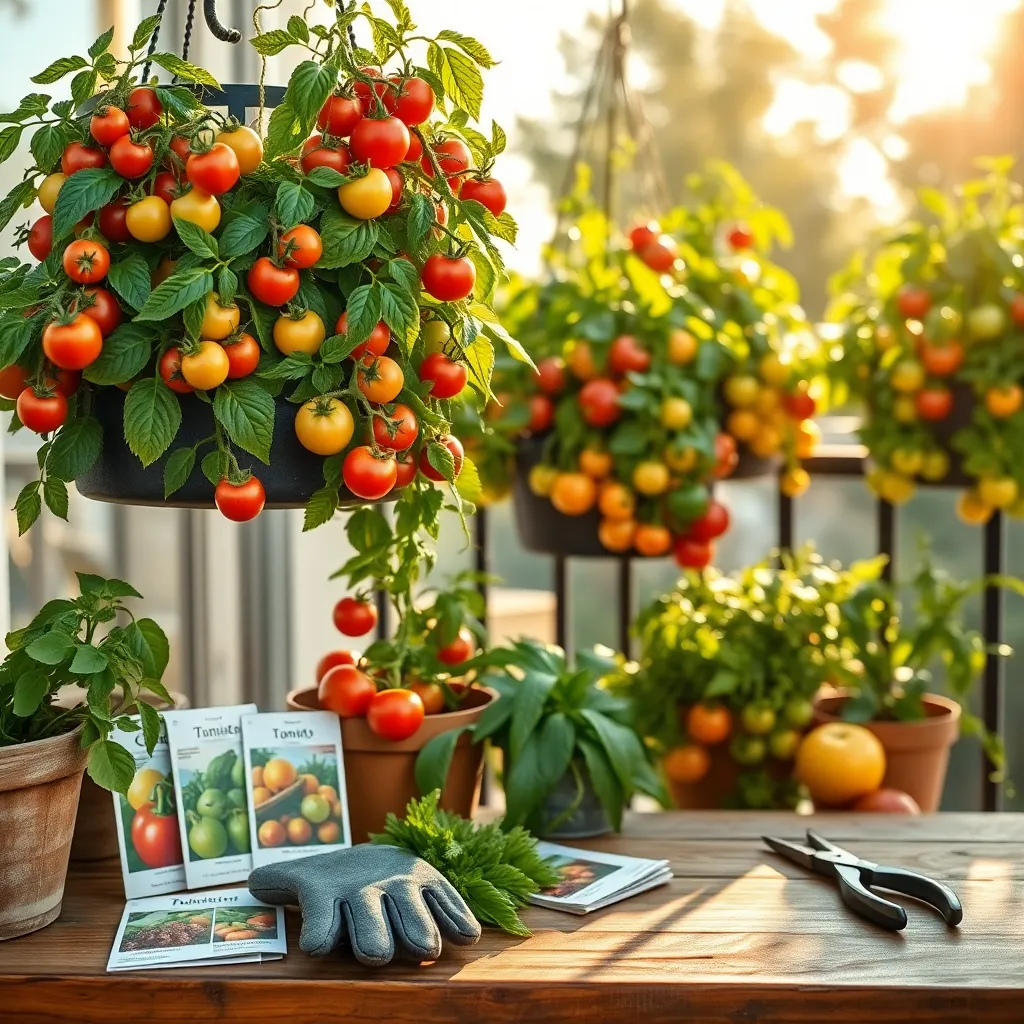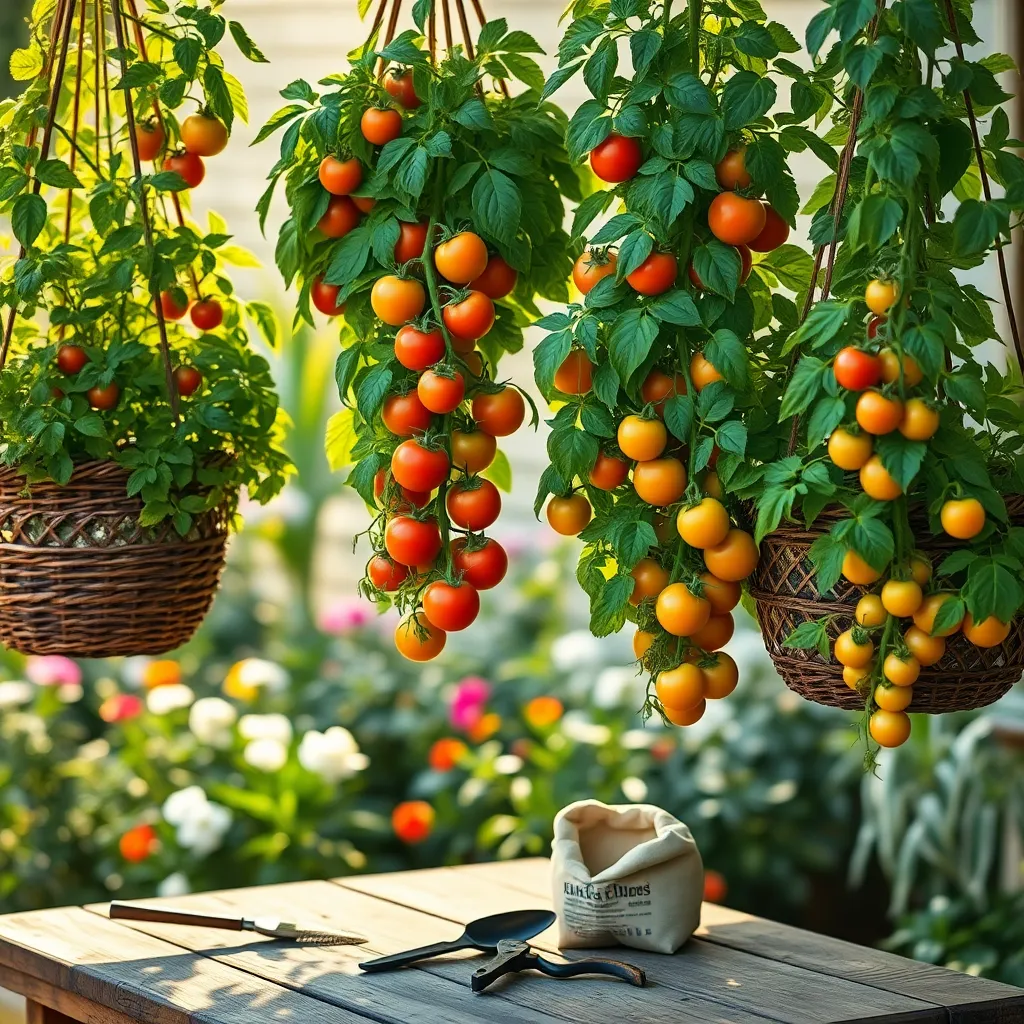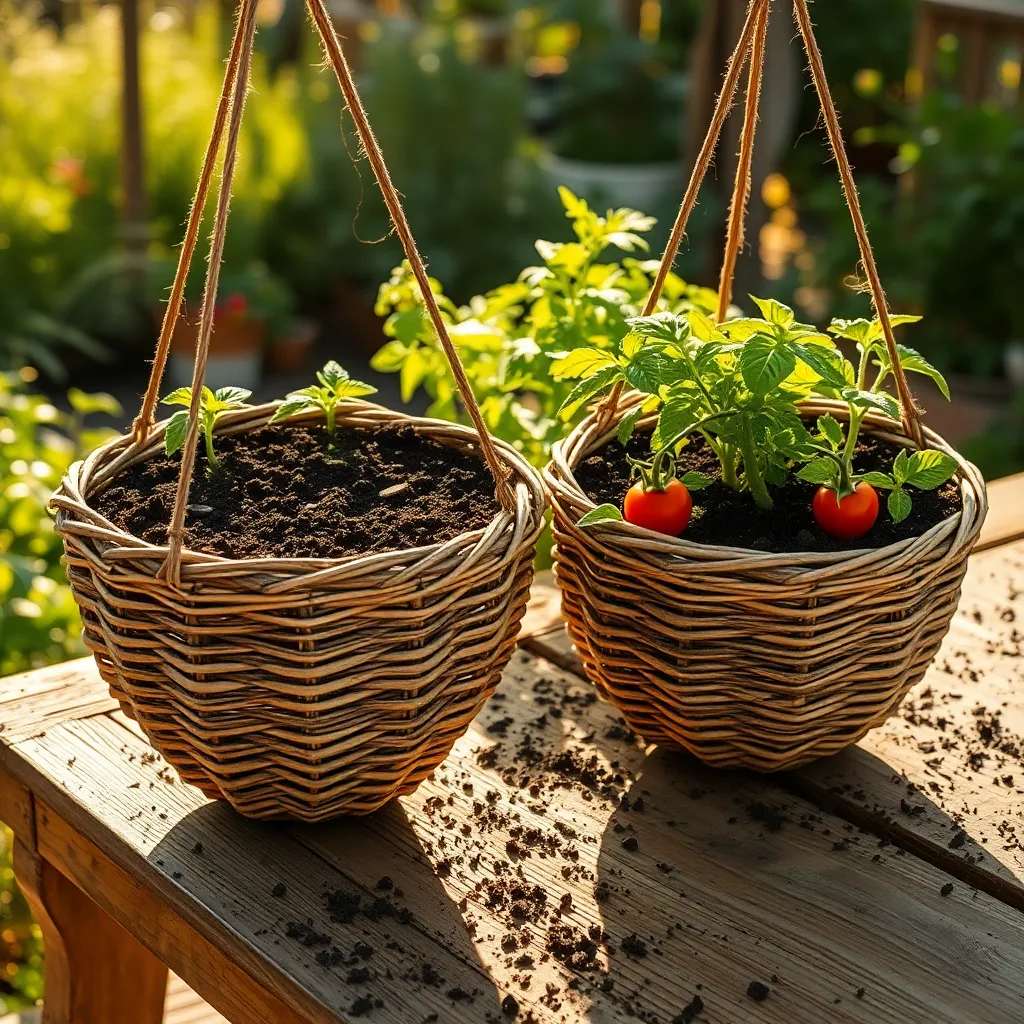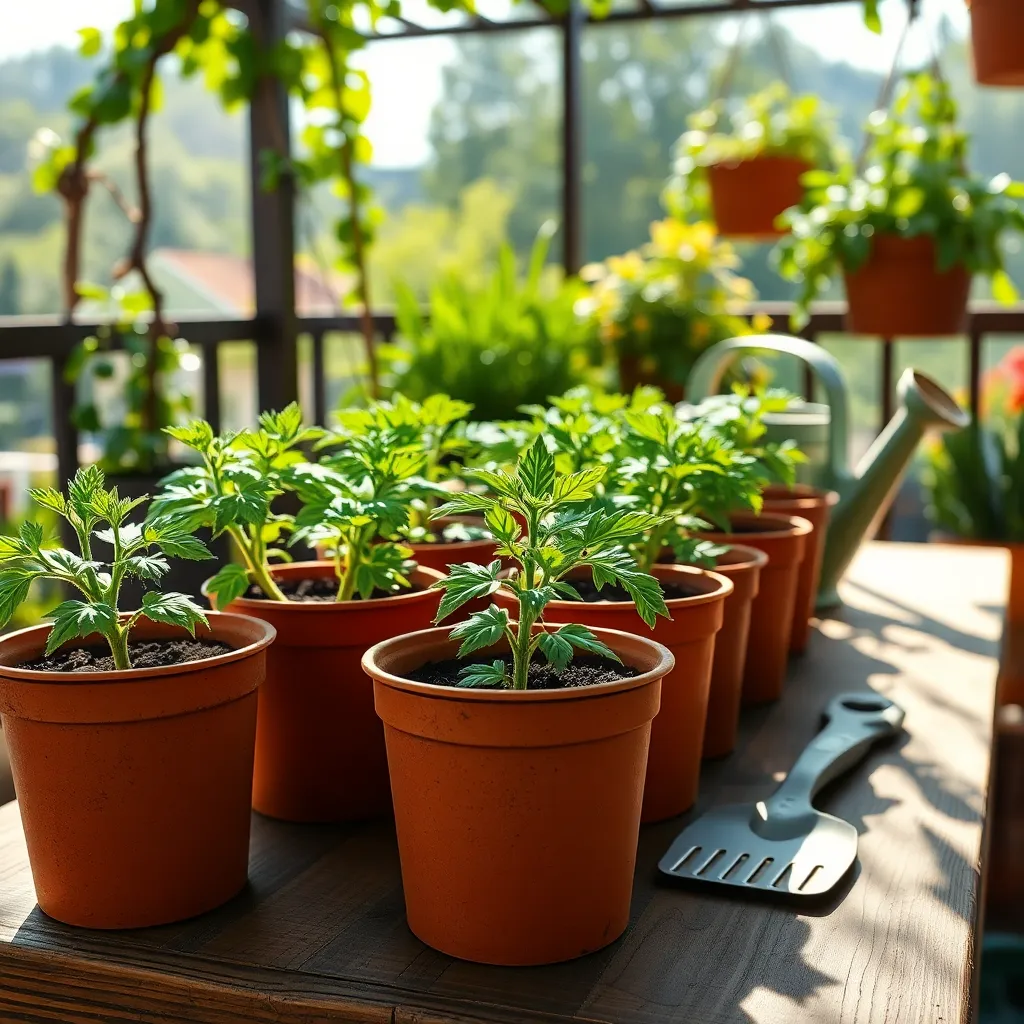Imagine plucking juicy, sun-ripened tomatoes right from your hanging basket, transforming your patio or balcony into a vibrant, edible oasis. Whether you’re new to gardening or a seasoned green thumb, growing tomatoes in hanging baskets offers a delightful twist on traditional gardening that maximizes space and enhances your outdoor living area.
The beauty of this method lies in its versatility, making it accessible regardless of your gardening experience or available space. You’ll learn how to select the right tomato varieties, prepare your hanging baskets, and provide the optimal care these plants need to thrive above ground.
As gardening enthusiasts, we understand the joy and fulfillment that comes from nurturing plants and watching them flourish. By the end of this article, you’ll be equipped with all the knowledge and tips necessary to turn your hanging baskets into bountiful tomato gardens, adding color and flavor to your home in the most charming way.
Select Suitable Tomato Varieties

When selecting tomato varieties for hanging baskets, opt for compact or determinate types that thrive in limited space. Smaller varieties like ‘Tumbling Tom’ or ‘Tiny Tim’ are excellent choices due to their adaptability to container environments.
Consider the climate and sunlight conditions of your growing area to ensure successful growth. Varieties like ‘Balcony’ or ‘Patio Princess’ are bred to perform well in varying light conditions, making them versatile for different regions.
Ensure your chosen variety has a strong and supportive stem to handle the weight of the fruit as it matures. This characteristic helps prevent breakage and supports healthy fruit production throughout the growing season.
Advanced gardeners might experiment with grafted tomatoes, which combine a vigorous rootstock with a flavorful scion for enhanced disease resistance and productivity. While this requires more initial effort, the payoff can be substantial in terms of yield and plant health.
Assemble Sturdy Hanging Baskets

When assembling sturdy hanging baskets for your tomatoes, begin by choosing a basket that can support the weight of mature plants and fruit. Opt for a basket with a diameter of at least 14-16 inches to provide enough room for root growth and moisture retention.
It’s important to select a liner that retains moisture while allowing for adequate drainage. Coconut coir or moss liners are excellent choices, as they hold moisture longer than plastic alternatives, reducing the need for frequent watering.
Fill the basket with a high-quality, lightweight potting mix that includes added nutrients to support vigorous tomato growth. Look for a mix that contains ingredients like peat moss, perlite, and compost to ensure good drainage and nutrient availability.
For beginners, remember to position your hanging baskets in a location that receives at least six to eight hours of sunlight each day. Advanced gardeners might consider rotating the baskets every few days to ensure even sun exposure, boosting overall plant health and fruit production.
Fill Baskets with Quality Soil

To ensure your hanging baskets thrive, start by filling them with a high-quality potting soil. Choose a soil mix specifically designed for containers, as it will provide the right balance of drainage and moisture retention for your tomato plants.
Opt for a potting mix that includes ingredients like peat moss, perlite, and vermiculite. These components help maintain the necessary aeration and prevent the soil from compacting, which is crucial for healthy root development.
For an added boost, consider mixing in a slow-release fertilizer to provide consistent nutrients throughout the growing season. This can help reduce the frequency of additional fertilization, allowing your tomatoes to flourish with minimal maintenance.
Advanced gardeners might want to experiment with adding some compost to the mix. This can enhance the soil’s nutrient profile and improve its water-holding capacity, offering a more organic approach to feeding your plants.
Plant Seedlings with Care

When planting tomato seedlings in hanging baskets, it is crucial to handle them with care to avoid damaging their delicate roots and stems. Gently remove the seedlings from their containers by supporting the base of the plant between your fingers and carefully lifting them out.
To ensure healthy growth, position the seedlings so that the root ball is just below the soil surface in the basket. Tomatoes thrive when planted deeply, so bury the stems up to their first set of true leaves to encourage robust root development.
Pay attention to spacing; allow at least 6 inches between plants to ensure they have enough room to grow and access to sunlight and air circulation. If your basket is large enough, consider planting a single tomato plant per basket to give it plenty of space to thrive.
Water the seedlings immediately after planting to help settle the soil around the roots and eliminate any air pockets. Consistent moisture is key, so ensure the soil remains evenly damp but not waterlogged, checking it daily during hot weather.
Ensure Adequate Sunlight Exposure

Tomatoes thrive when they receive ample sunlight, so it’s crucial to hang your baskets in a spot that gets at least 6 to 8 hours of direct sunlight daily. If your outdoor space is limited, consider using a sunlit balcony or a well-lit area near a window to optimize sunlight exposure.
Positioning your hanging baskets correctly can make a significant difference in the growth and yield of your tomato plants. Rotate the baskets every few days to ensure all sides of the plant receive equal sunlight, preventing uneven growth and promoting a robust plant structure.
For those in regions with intense midday sun, providing some shade during the hottest part of the day can prevent leaf scorch. A simple way to create shade is by using a lightweight, breathable fabric or positioning the baskets under the partial cover of a tree or pergola.
Advanced gardeners might consider using reflective surfaces to increase light exposure to the plants. Placing a light-colored wall or reflective material behind the hanging baskets can help redirect sunlight onto your tomato plants, maximizing their photosynthesis potential.
Conclusion: Growing Success with These Plants
In nurturing your hanging basket tomatoes, you’ve also uncovered five essential relationship principles: the importance of a strong foundation, consistent care, adaptability, effective communication, and celebrating growth. Just as your tomatoes thrive with sturdy support and regular watering, your relationships flourish with a solid base and ongoing attention. Adaptability, much like adjusting for sunlight and weather, strengthens bonds in ever-changing circumstances. Open communication, akin to tending to your plants’ needs, is vital for nurturing understanding. Finally, celebrating the fruits of your labor—whether a ripe tomato or an achieved milestone—reinforces connection and joy.
Now, take a moment to reflect on these insights and choose one area to focus on enhancing this week, whether it’s more frequent check-ins or being more adaptable. Remember, growth takes time and care. Bookmark this article as your guide for fostering both your garden and your relationships. As you cultivate these skills, envision the flourishing connections you’ll nourish over time. With each small step, you’re not just growing tomatoes; you’re nurturing a more resilient and rewarding relationship landscape. Save this journey for future reference, and watch as your relationships bloom beautifully.
